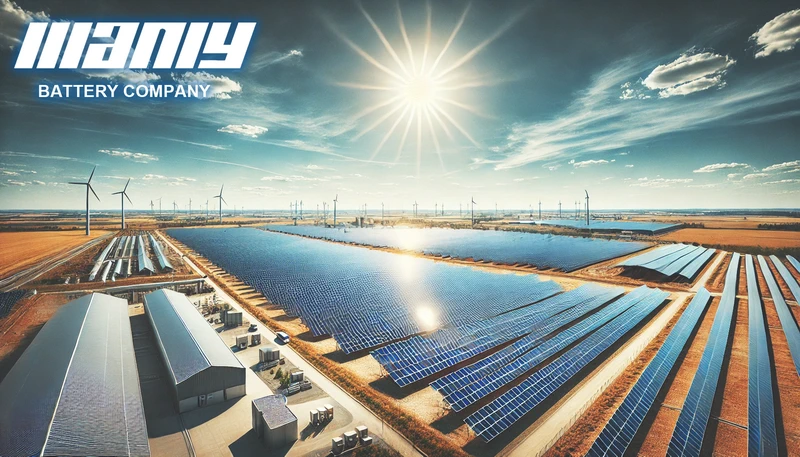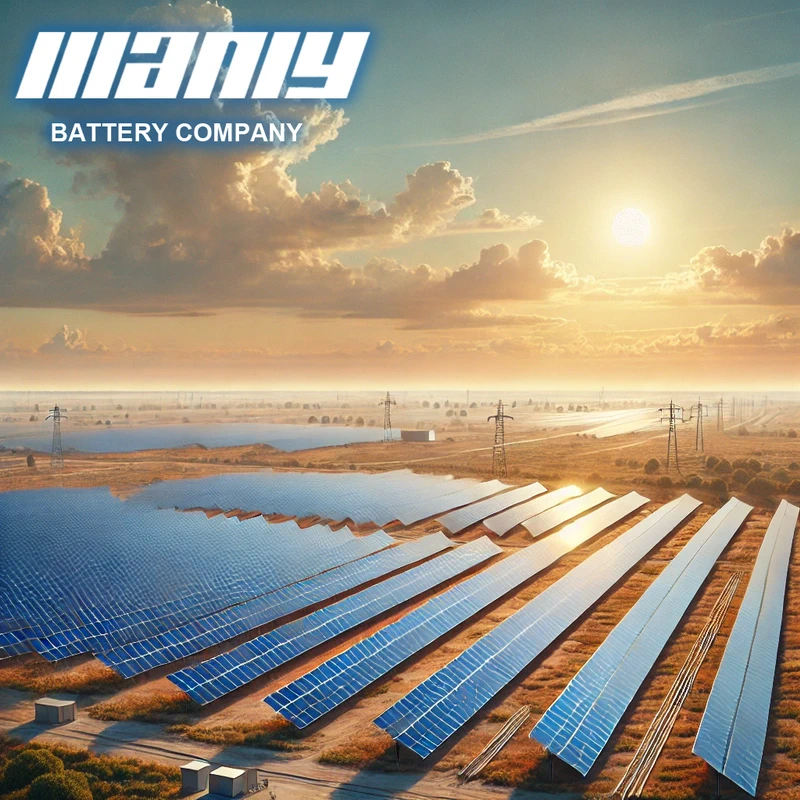Europas Energieumwandlung: Solarenergie übertrifft die Kohle im Jahr 2024
Inhaltsverzeichnis
- Europas Energieumwandlung: Solarenergie übertrifft die Kohle im Jahr 2024
2024 markierte einen erheblichen Wendepunkt auf der europäischen Energiereise. Solarenergie hat die Kohle offiziell als Hauptstromquelle übertroffen und eine tiefgreifende Verschiebung der Energielandschaft des Kontinents signalisiert. Während wir in 2025 eingehen, reflektiert dieser Artikel die Erfolge von 2024 und die vielversprechende Zukunft des Übergangs der erneuerbaren Energien in Europa.
Solarenergie führt den Weg im Jahr 2024
Im Jahr 2024 wurde die Solarenergie zum ersten Mal die führende Stromquelle Europas. Solar trägt nun 11% zur Gesamtstromversorgung Europas bei, die sowohl auf technologische Fortschritte als auch auf günstige Marktbedingungen zurückzuführen ist. Der Rückgang der Installationskosten sowie die verbesserte Effizienz von Sonnenkollektoren haben die Solarenergie zugänglicher und wirtschaftlich rentabler als je zuvor gemacht.
Mit zunehmender Solarenergie wird seine Integration in die Windenergie immer deutlicher geworden. Gemeinsam machen Solar- und Windkraft fast die Hälfte des Europas Energy Mix aus. Der Anteil der erneuerbaren Energien an der Gesamtenergieversorgung ist von 34% im Jahr 2019 auf 47% im Jahr 2024 gestiegen, was das starke Engagement Europas für die Verringerung des CO2 -Fußabdrucks und die Beschleunigung des Übergangs zur sauberen Energie widerspiegelt.
Rückgang der Kohle- und fossilen Brennstoffe
Der Erfolg von Solar- und Windenergie im Jahr 2024 ist auf Kosten der Kohle geführt, die jetzt nur 10% der Europa -Stromerzeugung ausmacht. Diese dramatische Verschiebung ist Teil der anhaltenden Bemühungen Europas, die Abhängigkeit von fossilen Brennstoffen und niedrigeren Treibhausgasemissionen zu verringern. Darüber hinaus hat Erdgas einen Rückgang der Nutzung verzeichnet, was bis 2024 fünf Jahre lang fünf Jahre lang gesunken ist, was die wachsende Dominanz der erneuerbaren Energien in der Region widerspiegelt.
Experten gehen davon aus, dass fossile Brennstoffe weiterhin ihren Anteil am europäischen Energiemix verlieren werden, da Technologien für erneuerbare Energien voranschreiten und kosteneffektiver werden. Bis 2025 wird erwartet, dass der Anteil fossiler Brennstoffe an der europäischen Energieversorgung noch weiter schrumpfen und mehr Möglichkeiten für sauberere Alternativen schaffen, um die Stufe zu steigen.
Energiemischvergleich: 2019 vs 2024
| Energiequelle | 2019 (%) | 2024 (%) | Ändern (%) |
| Solar- | 5 | 11 | 6 |
| Wind | 29 | 36 | 7 |
| Kohle | 34 | 10 | -24 |
| Erdgas | 23 | 13 | -10 |
| Andere erneuerbare Energien | 9 | 47 | 38 |
Für diejenigen, die die Energie speichern möchten, die aus Solarenergie erzeugt werden,MANLY-Batteriebietet hohe QualitätLithium -Ion und LiFePO4 AkkuSpeicherlösungen. Mit ihrer zuverlässigen Leistung sind diese Batterien so konzipiert, dass sie den wachsenden Nachfrage nach sauberer Energiespeicherung in ganz Europa unterstützen.
Wirtschaftliche und ökologische Vorteile
Der Übergang zu erneuerbaren Energien in Europa hat erhebliche wirtschaftliche und ökologische Vorteile gebracht. Seit 2019 hat der Anstieg der Solar- und Windenergiekapazität Europa geholfen, über 61 Milliarden US -Dollar an Einfuhren für fossile Brennstoffe zu vermeiden. Diese Verringerung der Abhängigkeit von importierten Energiequellen hat zu stabileren Energiepreisen und zu einer sichereren Energiekünftige für den Kontinent beigetragen.
Aus ökologischer Sicht hat die Verlagerung von Europa auf Solar- und Windkraft zu niedrigeren Kohlenstoffemissionen und einer verbesserten Luftqualität geführt. Wenn die Kohle- und Erdgaserzeugung zurückgeht, macht die Region wesentliche Fortschritte bei der Erreichung ihrer Klimaziele und die Minderung der Auswirkungen des Klimawandels.
Mit Blick auf das Jahr 2025 werden diese wirtschaftlichen und ökologischen Gewinne voraussichtlich wachsen, wobei weitere Fortschritte bei Technologien für erneuerbare Energien kosten und die Effizienz steigern.
Der politische Vorstoß von 2024 und ihre Auswirkungen auf die Zukunft
Die Transformation für erneuerbare Energien in Europa ist nicht nur eine Frage der technologischen Innovation, sondern auch der robusten politischen Unterstützung. Die Europäische Union hat Richtlinien für die Anreize für die Annahme erneuerbarer Energien wie Steuererleichterungen, Subventionen und strengere Kohlenstoffvorschriften erstellt. Diese Richtlinien haben eine Schlüsselrolle bei der Beschleunigung des Wachstums von Solar-, Wind- und anderen erneuerbaren Energiequellen gespielt.
Mit Blick auf 2025 werden sich diese politischen Rahmenbedingungen weiterentwickeln, wobei noch ehrgeizigere Ziele für die Erzeugung erneuerbarer Energie und die Verringerung der Kohlenstoffverringerung. Das European Green Deal bleibt eine treibende Kraft hinter der Energiepolitik Europas, die darauf abzielt, die Region bis 2050 zum ersten klimatralen Kontinent zu machen.
Eine glänzende Zukunft für Sonnenenergie im Jahr 2025 und darüber hinaus
Wenn Europa in 2025 fährt, wird erwartet, dass Sonnenenergie seine Aufwärtsbahn fortsetzt. Mit Fortschritten in Speichertechnologien, wie z. B. die von bereitgestellten vonMANLY-Batterie, erneuerbare Energien werden noch zuverlässiger und effizienter. Energiespeichersysteme sind entscheidend für die Maximierung des Potenzials intermittierender Quellen wie Solar und Wind, um sicherzustellen, dass Energie verfügbar ist, wenn sie am meisten benötigt werden.
Bis 2025 könnte die Solarenergie einen noch größeren Anteil des Europas Energiemix darstellen und die Bemühungen des Kontinents zur Erreichung seiner langfristigen Klima- und Energieziele unterstützen. Die Integration innovativer Technologien in Verbindung mit fortgesetzter politischer Unterstützung wird sicherstellen, dass Europa an der Spitze der globalen Bewegung für erneuerbare Energien bleibt.
Abschluss
The year 2024 marked a historic moment in Europe’s energy transition as solar power surpassed coal to become the leading source of electricity. This shift reflects Europe’s commitment to decarbonizing its energy sector and embracing renewable energy technologies. With continued investments in solar, wind, and energy storage solutions, Europe is on track to build a cleaner, more sustainable energy future.
Looking ahead to 2025, Europe’s energy landscape will continue to evolve, with renewable energy playing a central role in the region’s growth. As the continent expands its renewable energy capacity, the need for reliable energy storage solutions will only increase. Partnering with companies like MANLY-Batterie, which offers cutting-edge storage solutions, can help further drive the region’s renewable energy success.






